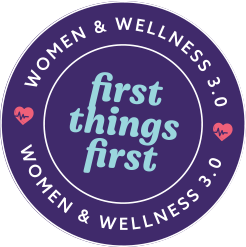There are so many things that take priority over taking care of your health.
Your family, and their immediate, day-to-day needs, always seem to come first.
But - being proactive about your health is the best way to protect both yourself and your family.
Life is busy for all of us.
Each of us needs to find our own reason.
The reason that finally compels you to take action and go to that annual checkup. To schedule a scan. To learn more about your family's medical history. To educate yourself on the warning signs of prevalent health issues.
LRBC's new project, the Women and Wellness Health Initiative, is here to help you find that reason.
W&W is a Lev Rochel Bikur Cholim initiative dedicated to spreading knowledge and awareness of women's health to the greater Lakewood community.





